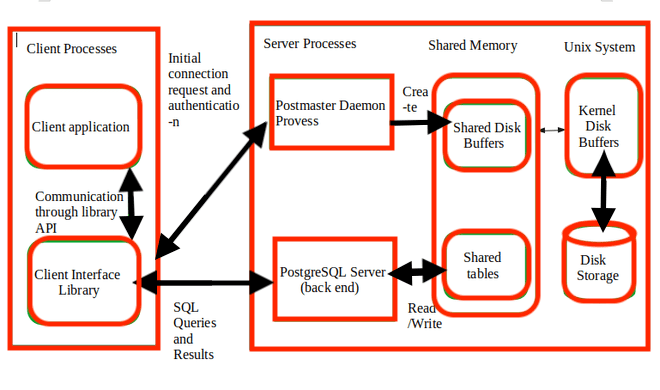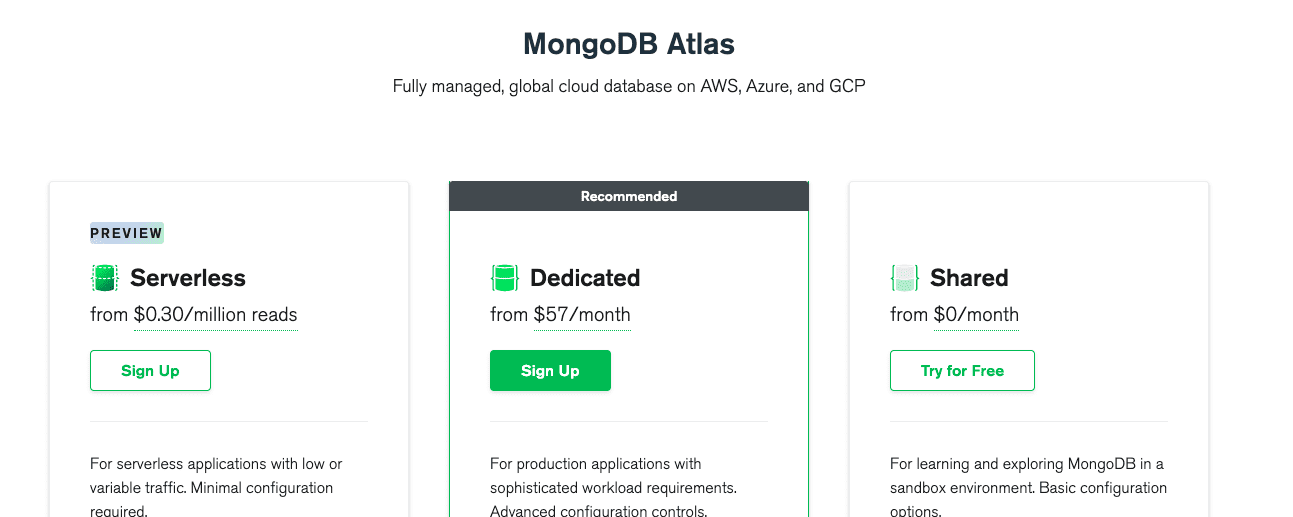A secure database is critical to the operation of any business. If you want to keep your data safe from phishing assaults and other risks, you must choose the correct service provider. However, with so many database options available, making a decision may be a real challenge. MongoDB and Postgresql are two popular database management systems.
Competition between corporations is prevalent nowadays, mainly if they sell comparable items. For a business in the highly competitive industry of Data Analytics, it helps to have a majority of the market’s customers and offer effective products and services. The decision between MongoDB and PostgreSQL is difficult in Database Management.
MongoDB and PostgreSQL are two popular databases, and this article presents an in-depth comparison to help you decide which one is best for your needs. An overview of both databases and their characteristics is also provided. Finally, it outlines some of the issues you may encounter while using these databases. Find out how to select the best database for your firm by following this guide.
Why use MongoDB
- Multiple computers can be served by one server.
- It’s easy to use because it’s JavaScript-based.
- Because it is a document-oriented database, it responds more quickly.
- Setting up the environment is more manageable now.
- It uses JSON syntax, which is simple to understand and widely supported by browsers.
- Objects, Object Members, Arrays, Values, and Strings save their data in JSON.
- Both Uber and the Stack Companies use MongoDB.
Why use PostgreSQL
- Open-source software.
- Multilingual options are available.
- Extensible to the Limits.
- Data integrity is maintained.
- Creates systems that can withstand failure.
- An access control system that is dependable
- International characters are supported.
- Apple uses PostgreSQL!
MongoDB vs. PostgreSQL
Terminology and concepts
PostgreSQL’s tabular model shares several words and ideas with MongoDB’s document model.
| MongoDB | PostgreSQL |
|---|---|
| ACID Transactions | ACID Transactions |
| Collection | Table |
| Document | Row |
| Field | Column |
| Secondary Index | Secondary Index |
| Embedded documents, $lookup & $graphLookup, $unionWith | JOINs, UNIONs |
| On-demand Materialized Views | Materialized Views |
| Aggregation Pipeline | GROUP_BY |
Factors to consider when deciding between MongoDB and PostgreSQL
Now that you have a fundamental understanding of both technologies let’s address the MongoDB versus PostgreSQL question. Based on your company’s needs and your budget, and the characteristics given below, there is no one-size-fits-all response here. MongoDB vs. PostgreSQL is a decision based on the following criteria.
1. ACID Compliance
Unlike PostgreSQL, MongoDB can be ACID Compliant. This is because databases must have the ACID qualities to monitor transactions effectively.
Unlike PostgreSQL, which employs regular SQL to process its data, MongoDB is a document database that uses BSON.
2. The architecture of MongoDB and PostgreSQL
MongoDB does not require a schema and may be used in a distributed design, unlike relational databases. In MongoDB, rules and triggers are enforced through collections to keep track of the relationships between different database properties. The following diagram depicts MongoDB’s internal structure.

MongoDB Architecture
PostgreSQL is built on SQL. However, it also supports specific NoSQL characteristics. It differs from MongoDB in that it is made from the ground up. It uses tables to apply various principles and triggers to the data. ETL (Extract, Transform, and Load) tools can also process the data more effectively because of how the data is organized. Below is a diagram of PostgreSQL’s architecture.

PostgreSQL Architecture
3. Comparing the syntax of MongoDB and PostgreSQL
Both databases support a radically diverse set of syntaxes. Documents store data in a NoSQL database such as MongoDB, which may be accessed via MQL. However, PostgreSQL is a relational database management system (RDBMS) that uses SQL to store and retrieve data.
The following example shows how to create a new MongoDB database, check whether it already exists, and display the database.
Creating a Database:
>use mydb switched to db mydb
Checking to see whether the database has been updated:
>db mydb
Displaying the database’s contents:
>show dbs local 78125GB test 0.23012GB
Below is an example of the MongoDB syntax for adding a record to the database:
>db.movie.insert({"name":"tutorials point"})
>show dbs
local 0.78125GB
mydb 0.23012GB
test 0.23012GB
The syntax for creating the “accounts” table in PostgreSQL is shown below:
CREATE TABLE accounts ( user_id serial PRIMARY KEY, username VARCHAR ( 50 ) UNIQUE NOT NULL, password VARCHAR ( 50 ) NOT NULL, email VARCHAR ( 255 ) UNIQUE NOT NULL, created_on TIMESTAMP NOT NULL, last_login TIMESTAMP );
To insert a record into a table in PostgreSQL, use the syntax outlined in the following table.
INSERT INTO accounts (user_id serial, username, password, email, created_on, last_login)
VALUES('1','guide2000','tutorials123','fosslinux@gmail.com','23-July-1997','10-May-2021');
4. Foreign Key Support
Foreign Keys are columns or groups of columns in one table that point to another table’s primary key and build a link between them. PostgreSQL has Foreign Key support; however, MongoDB does not.
It may be essential for some users to have these restrictions since they prevent the deletion of connections from one table to the next and prevent the insertion of erroneous data into foreign key fields.
5. Different approaches to query processing
MongoDB queries are processed via aggregation pipelines. These data transformation pipelines are made up of several phases. On the other side, PostgreSQL processes and runs query using GROUP_BY.
6. Data management
MongoDB relies on numerous replica sets to keep its data current. You can record and playback operations as needed with these sets. Synchronous replication is used by MongoDB, which means data is replicated across several systems simultaneously.
To keep its data safe, PostgreSQL employs 2-safe replication. Thus, PostgreSQL may update both records simultaneously, reducing the number of mistakes and maintaining a complete backup.
7. Relationships between tables
Table-to-table connections between your database’s tables enhance its analytical and archiving capabilities. Indexes are used in MongoDB to link tables. Indexes store a small quantity of data in an easy-to-understand format. They are only one part of a join, but they simplify your data and make it easier for you to find answers to your questions.
Joins in PostgreSQL are used to bring together data from several tables into a single one. PostgreSQL allows you to merge two tables using joins as long as you have two tables. PostgreSQL’s joins are divided into four categories: inner, left, right, and full joins, much like in conventional SQL. A Full Join can combine all of the material from both tables into a centralized database table.
8. Pricing options
You can select from one of three price options offered by MongoDB. These are the plans:
Shared - Free-of-charge Dedicated costs $57 a month multi-Region costs $97
A breakdown of the price structure for MongoDB Atlas is shown here:

MongoDB Pricing
The MongoDB Enterprise Advanced edition also comes with an On-Premise pricing option.
There is additional information about MongoDB’s pricing plan here.
PostgreSQL’s features are available to everyone because it is open-source and free.
MongoDB’s drawbacks
Knowing what MongoDB is and how it works is the first step in overcoming some of the difficulties you may run across when using it. MongoDB has the following challenges:
- It’s challenging to find new information quickly and simultaneously.
- MongoDB cannot integrate data from various sources into a single database for big data.
- It has a mediocre security architecture and is susceptible to a few security issues.
- Finally, data Governance is a challenge for MongoDB because of its difficulty validating data.
Some of the difficulties faced by PostgreSQL
PostgreSQL has many advantages, but it also has some disadvantages. PostgreSQL has the following drawbacks:
- Despite the ease with which PostgreSQL can be installed on various systems, it does not always perform simultaneously.
- PostgreSQL doubles the storage capacity of databases if they need to be upgraded.
- PostgreSQL’s indexes can’t be utilized to return a query’s results directly.
- The execution plans for queries are not stored anywhere.
- These processes could become CPU-bound if there are any high-volume bounding operations involved.
- For data and query processing, existing data engineering solutions require a significant learning curve that PostgreSQL does not have.
Overall, the critical differences between MongoDB and PostgreSQL may be summarized: Postgres is an RDMS (relational database management system), whereas MongoDB is a document database, While PostgreSQL is a monolithic database, MongoDB is a distributed database that employs BSON, whereas Postgres uses SQL.
MongoDB’s learning curve is quicker for people who already have a basic grasp of JavaScript. In contrast, those with a significant history of working with SQL databases might find it simpler to adapt to Postgres. For a range of businesses, both are becoming more attractive database systems. However, processing data from either database is a significant problem for corporations because of the time and complexity required.
Data ETL (extracting, transferring, and loading) sometimes necessitates a lot of code and takes a long time, especially when using MongoDB or PostgreSQL. In addition, many ETL vendors may not have streamlined their solutions to cope with MongoDB’s unique syntax and NoSQL support.
PostgreSQL and MongoDB have the following differences:
| MongoDB | PostgreSQL |
|---|---|
| C++ was used to develop MongoDB. | C was used to write PostgreSQL. |
| 10gen, the company behind MongoDB, launched the software in 2007 and named it after the term "humongous." | With the help of the PostgreSQL Global Development Group and a thriving community, PostgreSQL is an open-source database management system |
| Support forums for MongoDB may be found on ServerFault, StackOverflow, and the Community Support Forums. Enterprise quality assistance is available to customers around the clock, 365 days a year. | PostgreSQL users may use a wide range of collaborative and commercial support solutions. IRC and mailing lists are part of the community's assistance. |
| Document Oriented | Object-Oriented |
| It is only available in English | Available in a Variety of Languages |
| Management System for Non-Relational Databases | Software for managing relational databases |
In your view, which one is the best, and why?
Using PostgreSQL is the best option if you require a standard-compliant database and ACID (Atomicity, Consistency, Isolation, and Durability) compliant.
Real-time analytics, but not accounting systems, are the ideal use cases for MongoDB, best suited for scalability and caching.
Conclusion
An in-depth examination of the two most common database technologies in use today, MongoDB and PostgreSQL, has been provided in this article. Database features and limitations are also discussed. In addition, it provided the criteria by which each database may be evaluated. A company’s objectives and available resources will determine whether it goes with MongoDB vs. PostgreSQL in the end.
MongoDB could be a decent option if you need a database with a high level of scalability and processing capacity. Because it is so simple to learn and does not adhere to the usual SQL syntax, it may also be utilized by those who lack programming expertise. On the other hand, if you have limited resources but are familiar with traditional SQL syntax and methods, PostgreSQL could be a better option. Aside from these minor changes, both databases operate comparably well and may be used by any company, client, or business.
We hope you found this article guide helpful. If yes, let us know via the comments section. Thanks for reading.

